Content Strategy
The Customer Experience Is a Content Experience
By Andrew Wheeler on November 30, 2021
Subscribe to our monthly newsletter, Content & Context, to receive future insights and updates on the content marketing world from Skyword CEO, Andrew C. Wheeler.
Let's talk about the convergence of content marketing and the customer experience (CX).
Two years ago—and 23 years since Bill Gates declared "content is king"—few brands had truly made content the cornerstone of their customer experience.
That changed with the pandemic.
Digital experiences were thrown into the spotlight, and all the trillions spent on digital transformation (DT) initiatives over the years didn't keep brands from being caught on the back foot.
Case in point: I heard from a marketing executive who was panicked that her brand's digital experience was not ready for prime-time. The pandemic was driving millions of potential customers to their first online grocery shopping experience, and, frustrated, they were turning away from it. It would be a huge uphill battle to win even a portion of those customers back after the fact.
Another VP in the financial services industry told me the pandemic was a wake-up call: "We quickly realized how disjointed some of our digital experiences and our user journeys were...it really highlighted opportunities for us to be better in a holistic and really visceral way."
Recognizing the opportunity cost involved, CMOs and CCOs have been scrambling to correct those deficiencies ever since.
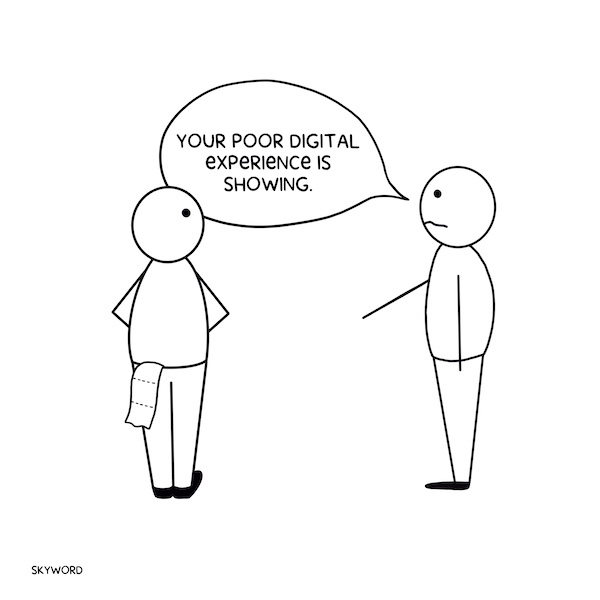
Now brands have shifted from making the hard and fast changes they needed to guarantee business continuity through the pandemic to making more wholesale investments in digital as the primary growth area for their businesses.
So what role does content play in all this? In short, a critical one. I'll give you three reasons why:
-
Customer acquisition: Recently, Scott Galloway validated the work of content marketers everywhere when he wrote, "Firms in every sector are realizing that the best way to reduce their CAC (customer acquisition cost) is to produce proprietary content that keeps customers engaged and increases word of mouth." He points to how savvy brands have gobbled up digital media companies with large, seemingly monetizable audiences (i.e., Hubspot's purchase of The Hustle or Robinhood's purchase of MarketSnacks). In the likely case that your brand isn't in a position to buy a media company, it needs to start thinking and acting like one; that means building an owned audience with an ecosystem of unique, high-value content that drives continuous engagement.
-
Expectations: With the increased importance of digital comes increased pressure to make your digital experience exceptional. Due to what Accenture describes as the liquidity of consumer expectations, brands aren't judged against direct competitors in a digital context; they're judged against standards set by any entity with best-in-class CX. With many CX fundamentals now commonplace (like fast checkout, high-quality product imagery, and easy navigation), CX differentiation is even harder than it used to be. The brands standing out are doing so with content that supports a unique brand narrative that's fine-tuned for the persona(s) they serve. An example is DtoC superstar Airbnb, whose site is peppered with rich, persona-based content, including its most recent product announcement, which begins as a narrative film.
-
Innovation: An increased reliance on digital channels requires an increase in the digital content needed to fuel them, plain and simple. Not only do brands need content to support more activity across existing digital channels, they also need net-new content to "digitize" areas of the sales funnel that were largely human-supported before, such as sales consulting, product selection, troubleshooting, etc. And, for those who aim to finally realize the potential of personalization technology going forward, yet more content (in the form of modularized variations) is required.
I think most of you would agree that the customer experience is now, essentially, a content experience. But is your organization on the same page?
I ask because the brands we work with are pursuing their visions for a unified, content-driven customer experience very aggressively.
The window of opportunity is closing on brands who haven't made content key to their CX strategy. And marketers have a finite amount of time to assume an influential role in this area of innovation within their brands.
If you haven't already, here's where I recommend starting your journey towards a more successful, content-enabled customer experience:
Audit Your Customer Journey
What kind of digital experience are you providing customers? Is your content seeding a clear path to conversion, or is it broken/incomplete? To find out, you must audit your digital customer journey and the content that supports it, from blog posts and white papers to product and customer service pages. Look for "holes in the bucket," i.e., where customers are falling out of the funnel and what content is missing or underperforming that could prevent that from happening. Our research has found that content to support conversion and retention is woefully lacking in most organizations. Make this audit your starting point, but also make it a habit. Many marketers fail to revisit their customer journey regularly because they assume it doesn't change too often. The pandemic alone has had a major impact on digital journeys and behavior (as well as platforms) will continue to evolve at an accelerated pace.
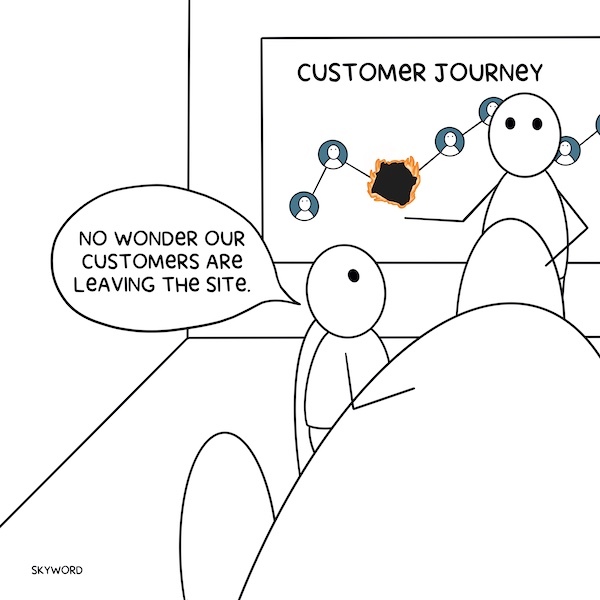
Incorporate Fast Data
One of the biggest gaps limiting brands' ability to make customer-centric decisions is a lack of customer-centric data. Traditional sources of customer data (like market research or analyst reports) are valuable for trend analysis, but are too slow and lack the specificity to fuel today's real-time content planning needs. A host of data solutions are changing that. We've been piloting the use of our own "fast data" in combination with tools like Suzy to help brands tap into immediate customer sentiment, and pressure test persona-based messaging before it's put in market. Ideally, you'll use a mix of fast and slow(er) data to draw conclusions about your brand, market, and audience, respectively, but you can see in the chart below that digital inputs are particularly integral to digital content planning—make sure you're leveraging them.
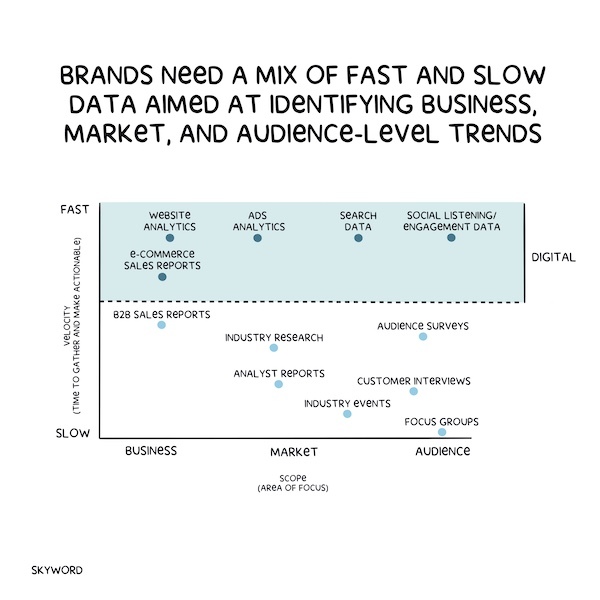
Adapt Your Resource Model
Ask yourself if your org chart is prepared to support a major ramp up in content creation. For a host of reasons I've mentioned before, scaling content through incremental headcount or by handing off large portions of the marketing funnel to agencies isn't sustainable anymore. What is sustainable? Augmenting your team with flexible external resources and (if needed) partners to manage those resources for you. This offers the added benefit of giving you access to a much more diverse set of skills and backgrounds than you could realistically staff for. Securing and retaining top talent via traditional employment models will only grow more challenging. So, if you haven't already, I recommend looking at how blended teaming has already taken hold in our industry and planning how to adopt the best version of this solution for your team.
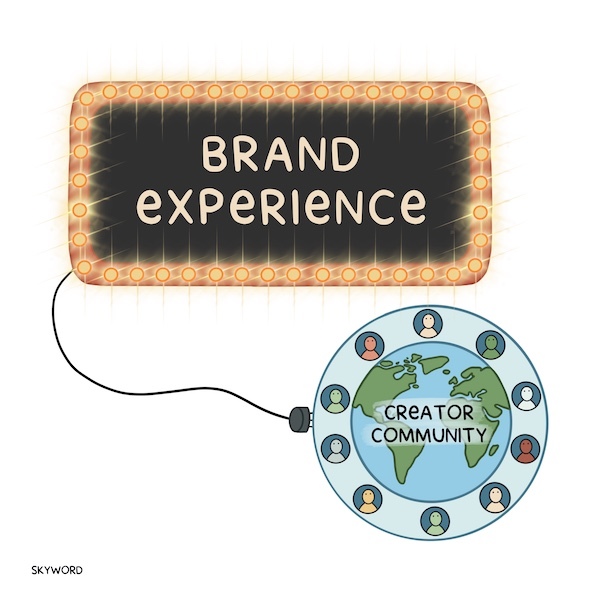
Deepen Your Bonds with Digital Teams
Unless you have the technical savvy on your team, it's more than likely that you'll need the ongoing support and buy-in from a web dev, DT, or CX team to bring your vision of intelligent content delivery at scale to life. Forge closer partnerships with these team members and departments now; bring their knowledge to bear as you examine your existing digital experience and come up with recommendations for how to change it. Personally, I've found that these teams almost always know how to get things done faster and better than you could have imagined, and with resiliency baked in.
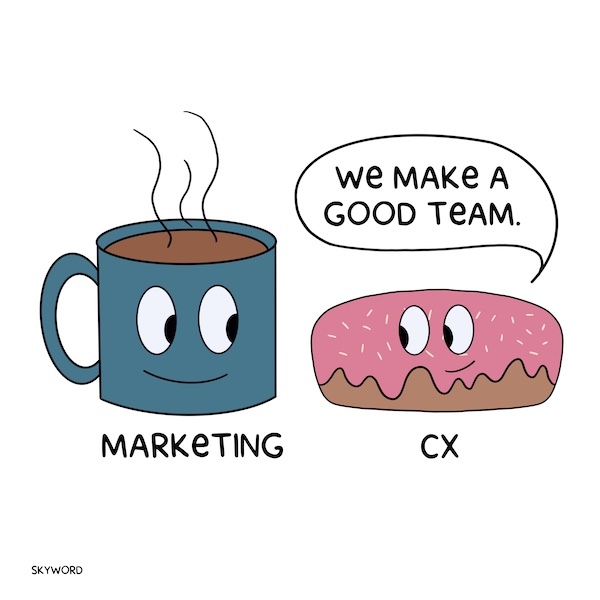
I see many parallels between the CMO's content stewardship today and the CIO's technology stewardship in the early 2000s. Replace "technology" with "content" and the questions marketing teams should be asking are clear:
-
How is our content being used today, and what kind of content will help us serve our customers better?
-
How do we spread the practice of content strategy across the enterprise?
-
How do we scale the use of content across the enterprise while controlling continuity?
-
How do we tie our content innovation efforts to business objectives that apply to all divisions of the company?
If you buy into this analogy, you know how the CMO's role as content integrator and architect plays out. Those who succeed will build content ecosystems that align to new customer experience models, increase the effectiveness of how content is used across siloed departments, and they will build flexible content operations they can then turn into a competitive asset.
Those who do nothing can expect to be locked out of decisions that directly impact the metrics they're accountable for, to lose valuable customers to competitors, or to (eventually) be replaced.
The question to ask is not how do we make content work for what we're doing now. It's where do we want our brand to be five years from now, and how do we need to use content now, next year, and the year after to get there.
By the way, we host Pathfinders, a roundtable series that brings marketers together for networking, best-practice sharing, and solutioning around topics like CX, scaling content, proving content ROI, and more. It's an invite-only event, so shoot me an email if you're interested in getting on the guest list.
Featured image by Ivan Samkov from Pexels.
